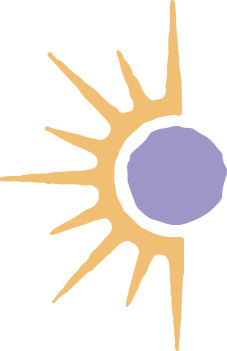WHAT WE TREAT


Co-morbidity, the presence of one or more additional conditions co-occurring with a primary condition, is quite common in individuals with eating disorders. Here are some mental health conditions that often co-occur with eating disorders, along with their emotional experiences and outward behaviors that may serve as red flags:
The vast majority (97%) of people hospitalized for an eating disorder have a co-occurring health condition. Mood disorders, like major depression, are the primary underlying condition followed by anxiety disorders, such as obsessive-compulsive disorder, post-traumatic stress disorder, and substance use disorder.
An estimated 26% of Americans ages 18 and older (about 1 in 4 adults) suffers from a diagnosable mental disorder in a given year. Many people suffer from more than one mental disorder at a given time. In particular, depressive illnesses tend to co-occur with substance use and anxiety disorders.
What it can feel like: Feelings of persistent sadness, hopelessness, loss of interest in previously enjoyed activities, feelings of worthlessness, and a pervasive sense of despair. It can also become increasingly challenging to show up for any duties or obligations, or feeling too exhausted to get out of bed every day.
What is can look like: Withdrawal from social activities or responsibilities, changes in sleep patterns (either insomnia or hypersomnia), significant weight changes, decreased energy, and in some cases, expressions of suicidal thoughts or behaviors.
What it can feel like: Excessive worry, feelings of nervousness, restlessness, and a sense of impending doom or danger. Fear that is out of proportion to the actual situation.
What it can look like: Avoidance of certain situations, compulsive behaviors, difficulty concentrating, physical symptoms like increased heart rate, trembling, sweating, gastrointestinal issues, or panic attacks.
What it can look like: Flashbacks, nightmares, and severe anxiety, as well as uncontrollable thoughts about the traumatic event. May include feelings of guilt, loneliness, or detachment from others.
What it can feel like: Avoidance of places, people, and activities that are reminders of the trauma, sudden angry outbursts, being easily startled, feeling tense or “on edge,” difficulty sleeping, and self-destructive behavior.
What it can feel like: Dependence on substances to cope with negative emotions or to feel normal, feelings of guilt or shame about substance use, inability to control or stop substance use despite the desire to do so.
What it can look like: Changes in friend groups, secretive behavior, neglecting responsibilities, needing more of the substance to get the same effect, withdrawal symptoms when not using, pupils appearing either too large or too small for the environment.
What it can feel like: In manic phases, individuals may experience feelings of euphoria, irritability, or grandiosity. In depressive phases, they may exhibit symptoms similar to major depressive disorder.
What it can look like: During manic phases, increased activity levels, reduced need for sleep, rapid speech, impulsivity, risky behavior. During depressive phases, symptoms similar to major depression.
What it can feel like: vivid hallucinations, intense paranoia/delusions, struggling with decision making and daily tasks, feeling numb or disconnected from your emotions, constant worry due to unpredictable symptoms, isolating like no one understands what you are experiencing or believes you.
What it can look like: incoherent conversation, illogical task completion, unusual behavior or remaining motionless, responding to unseen stimuli, talking to imaginary entities, expressing irrational fears or beliefs, preference for isolation, appearing emotionally flat or unresponsive.
What It Can Feel Like: Having a hard time distinguishing between what is real and what is imagined, experiencing big emotional extremes high (mania) and lows (depression), persistent fear and anxiety, isolation and feeling loneliness, problems with memory, concentration, decision making, feeling overwhelmed.
What is can look like: Disorganized thinking, hallucinations, delusions, episodes of mania, depression, unpredictable behavior, difficulty in social situations, impaired functioning, fluctuating emotions that seem out of context.
What it can feel like: Persistent distraction, difficulty focusing, feeling overwhelmed. Internal restlessness, urge to move, discomfort in stillness. Lack of control over actions, spontaneous decisions or comments. Heightened emotions, quick temper, easily upset. Skewed perception of time, constant stress about being behind. Difficulty organizing thoughts and tasks.
What it can look like: Difficulty sustaining attention, not following instructions, forgetfulness. Excessive fidgeting, restlessness, wearing others out with activity. Interrupting others, blurting out answers, difficulty waiting turns. Tardiness, missed deadlines, rushing tasks. Messy work area, losing important items, general chaos.
What It Can Feel Like: Obsessive thoughts that won’t stop no matter how hard you try, feeling like you have to do certain things “just right” or something bad will happen, needing constant reassurance but still feeling unsure, repeating actions or mental steps to calm your anxiety, avoiding people or situations that trigger intrusive thoughts, hiding rituals out of embarrassment or fear of being judged.
What is can look like: Frequent hand-washing or checking things over and over, arranging objects in a specific way to feel “okay,” asking the same questions for reassurance, avoiding places or people that trigger anxiety, silently repeating words or prayers in your head, spending hours stuck in routines that others don’t notice.

At We Conquer Together, we are committed to providing comprehensive mental health services in Yorba Linda, Orange County. Our residential mental health treatment center offers personalized care for a wide range of mental health disorders, ensuring that each individual receives the support they need to achieve long-term recovery. Our services are designed to address both primary mental health conditions and co-occurring disorders, providing a holistic approach to mental health care.
Our experienced team of professionals is dedicated to creating a safe and supportive environment for all residents. We understand that each individual’s journey to mental wellness is unique, and we tailor our treatment plans to meet the specific needs of our clients. Whether you are struggling with depression, anxiety, bipolar disorder, or any other mental health condition, our goal is to help you regain control of your life and improve your overall well-being. By offering a range of therapeutic modalities and evidence-based practices, we strive to provide the highest quality mental health treatment in Orange County.

At We Conquer Together, we pride ourselves on offering a comprehensive and compassionate approach to mental health treatment. From the moment you enter our facility, you will be greeted by a warm and welcoming team dedicated to supporting your journey to recovery. Our residential treatment center in Orange County provides a safe and structured environment where you can focus on healing and personal growth.
During your stay, you can expect to receive individualized care tailored to your specific needs. Our multidisciplinary team includes psychiatrists, therapists, and other mental health professionals who collaborate to create a personalized treatment plan for you. This plan may include various therapeutic approaches such as cognitive behavioral therapy, family therapy, and other evidence-based practices designed to address your unique challenges.
We also understand the importance of treating co-occurring disorders, and our program is equipped to provide comprehensive care for conditions such as substance use disorders, PTSD, and more. Our goal is to help you build a strong foundation for long-term recovery, equipping you with the tools and strategies needed to manage your mental health effectively. Throughout your treatment, you will have access to a range of resources and support systems to ensure a holistic and well-rounded approach to your well-being.
Our mental health program at We Conquer Together is designed to provide comprehensive and compassionate care in a serene environment. We believe in a holistic approach to treatment, addressing not only the symptoms of mental health disorders but also the underlying causes and contributing factors. Our goal is to support your journey to recovery by offering a wide range of services and resources tailored to your individual needs.
Key elements of our treatment program in Yorba Linda include:
Our mental health program is designed to empower you to take control of your mental health and build a fulfilling, balanced life. By offering a wide range of services in a supportive and nurturing environment, we aim to help you achieve lasting recovery and improved well-being.
We Conquer Together offers a wide range of mental health services in Orange County, including treatment for depression, anxiety, bipolar disorder, schizophrenia, and schizoaffective disorder. Our services are designed to address both primary mental health conditions and co-occurring disorders such as substance use disorder. We provide individualized care plans, utilizing evidence-based practices to support our clients’ journey to recovery.
Accessing mental health resources in Orange County is easy with We Conquer Together. We provide comprehensive mental health treatment and resources for individuals suffering from various mental health disorders. Our team is dedicated to helping you find the right support, whether you need inpatient treatment, counseling, or case management services. We also offer information and referrals to community resources and support groups.
Inpatient treatment at We Conquer Together includes a structured environment where individuals can receive intensive mental health care. Our inpatient programs address various mental health conditions such as major depression, PTSD, and schizoaffective disorder. We provide a combination of therapeutic modalities, including cognitive behavioral therapy (CBT), individual and group therapy, and medication management. Our goal is to stabilize patients and help them develop coping strategies for long-term recovery.
At We Conquer Together, we understand that substance use disorders often co-occur with other mental health conditions. Our integrated treatment approach addresses both substance use and mental health disorders simultaneously. We offer detoxification services, counseling, and behavioral therapies to help individuals overcome addiction and manage their mental health issues. Our comprehensive care ensures that clients receive the support they need to achieve lasting recovery.
Cognitive-Behavioral Therapy (CBT) is a widely used therapeutic approach that helps individuals identify and change negative thought patterns and behaviors. At We Conquer Together, we use CBT to treat a variety of mental health conditions, including anxiety disorders, depression, and PTSD. CBT helps individuals develop healthier coping mechanisms, improve emotional regulation, and reduce symptoms of mental health disorders. This therapy is a key component of our treatment programs.
Yes, We Conquer Together offers family therapy services as part of our comprehensive mental health treatment programs. Family therapy helps improve communication, resolve conflicts, and strengthen relationships among family members. It is particularly beneficial for families dealing with mental health and substance use disorders. Our therapists work with families to create a supportive environment that promotes recovery and well-being for all members.
We Conquer Together is equipped to handle mental health crises with immediate and effective interventions. Our crisis services include assessment, stabilization, and short-term treatment to address acute mental health issues. We provide a safe environment for individuals experiencing a crisis and work to de-escalate situations while connecting them with ongoing support and treatment options. Our team is trained to respond to various mental health emergencies, ensuring that clients receive the care they need when they need it most.
Yes, We Conquer Together specializes in treating individuals with co-occurring substance abuse and mental health conditions. Our integrated treatment programs address both issues simultaneously, providing comprehensive care that includes detoxification, counseling, and therapy. By treating the whole person, we aim to achieve better outcomes and long-term recovery for our clients.
Sasha holds over six years of experience in the behavioral health treatment landscape. With a comprehensive background spanning various facets of the field, she brings a wealth of expertise to our team offering a great understanding of every available level of care.
Sasha’s dedication to her work reflects her commitment to providing the highest level of care and support to those in need, embodying our organization’s mission of compassionate healing and holistic recovery.
All Rights Reserved 2025